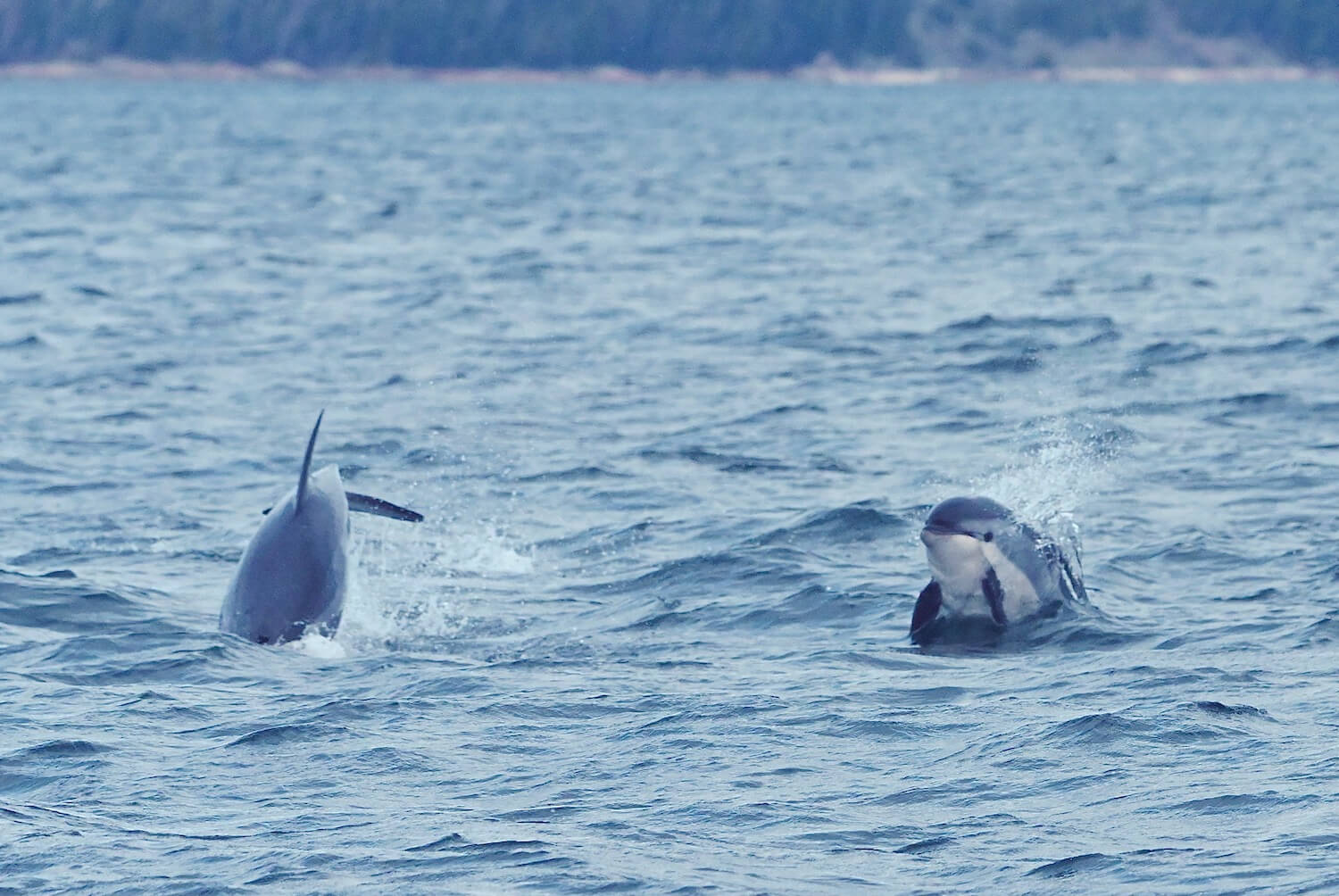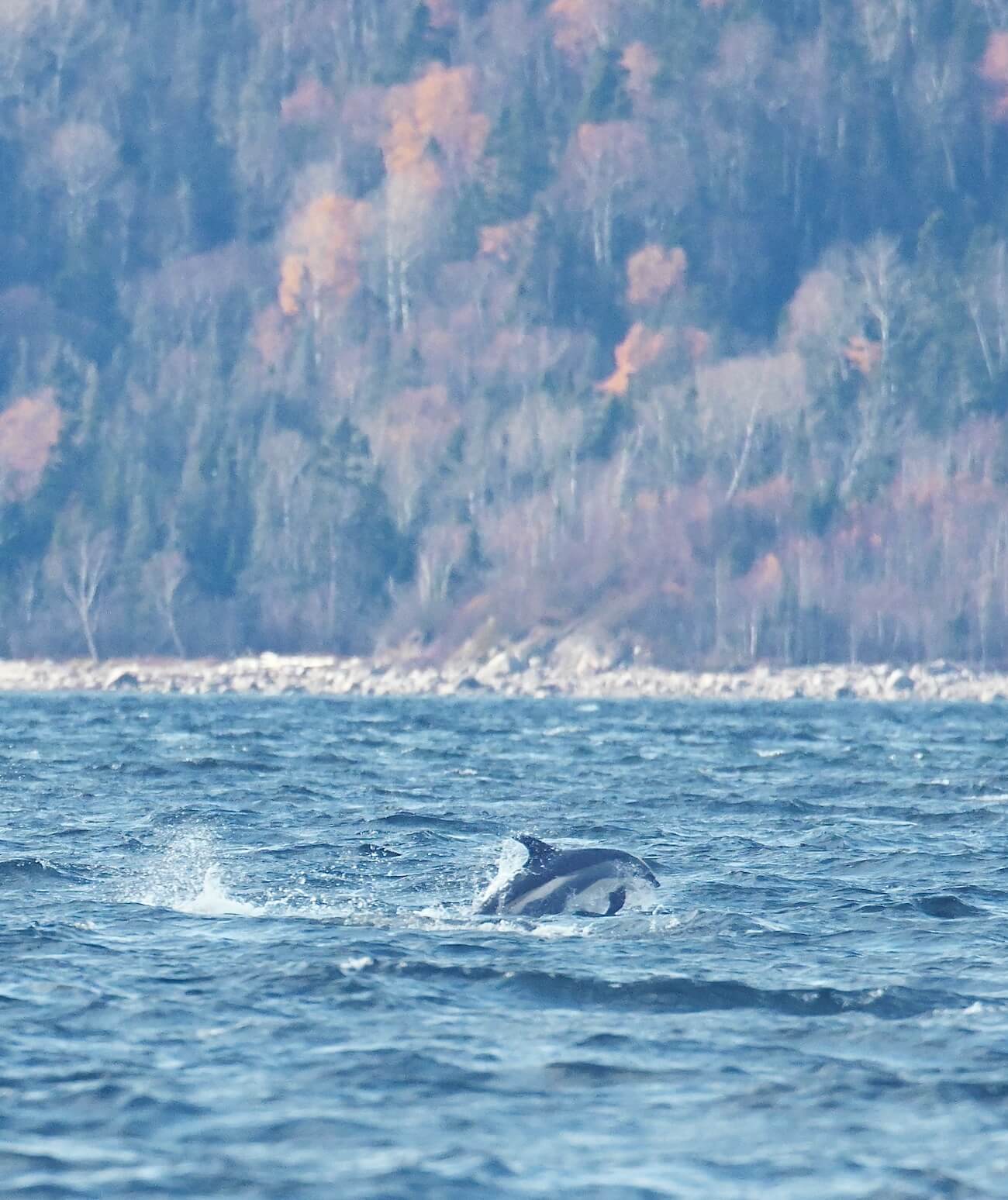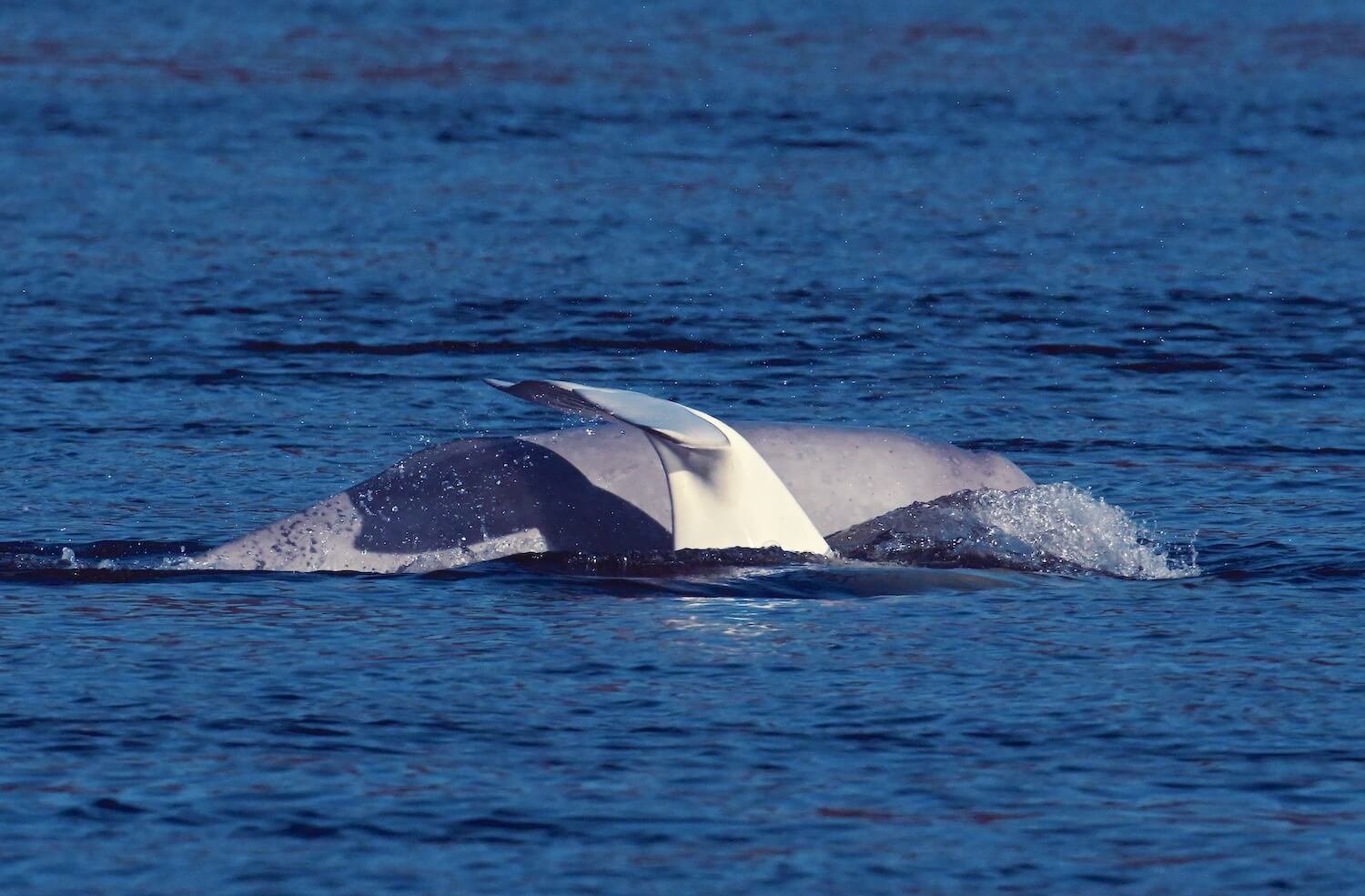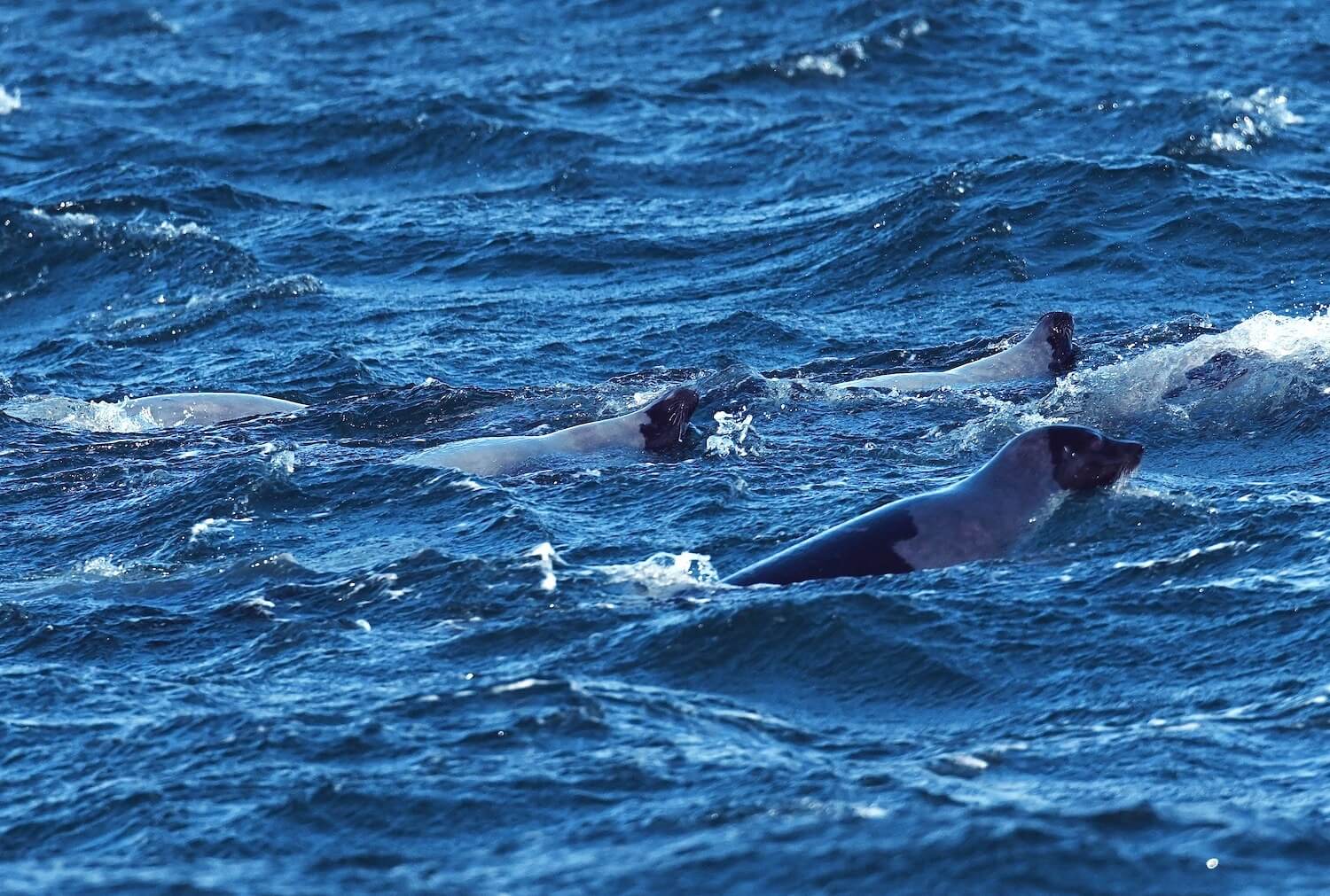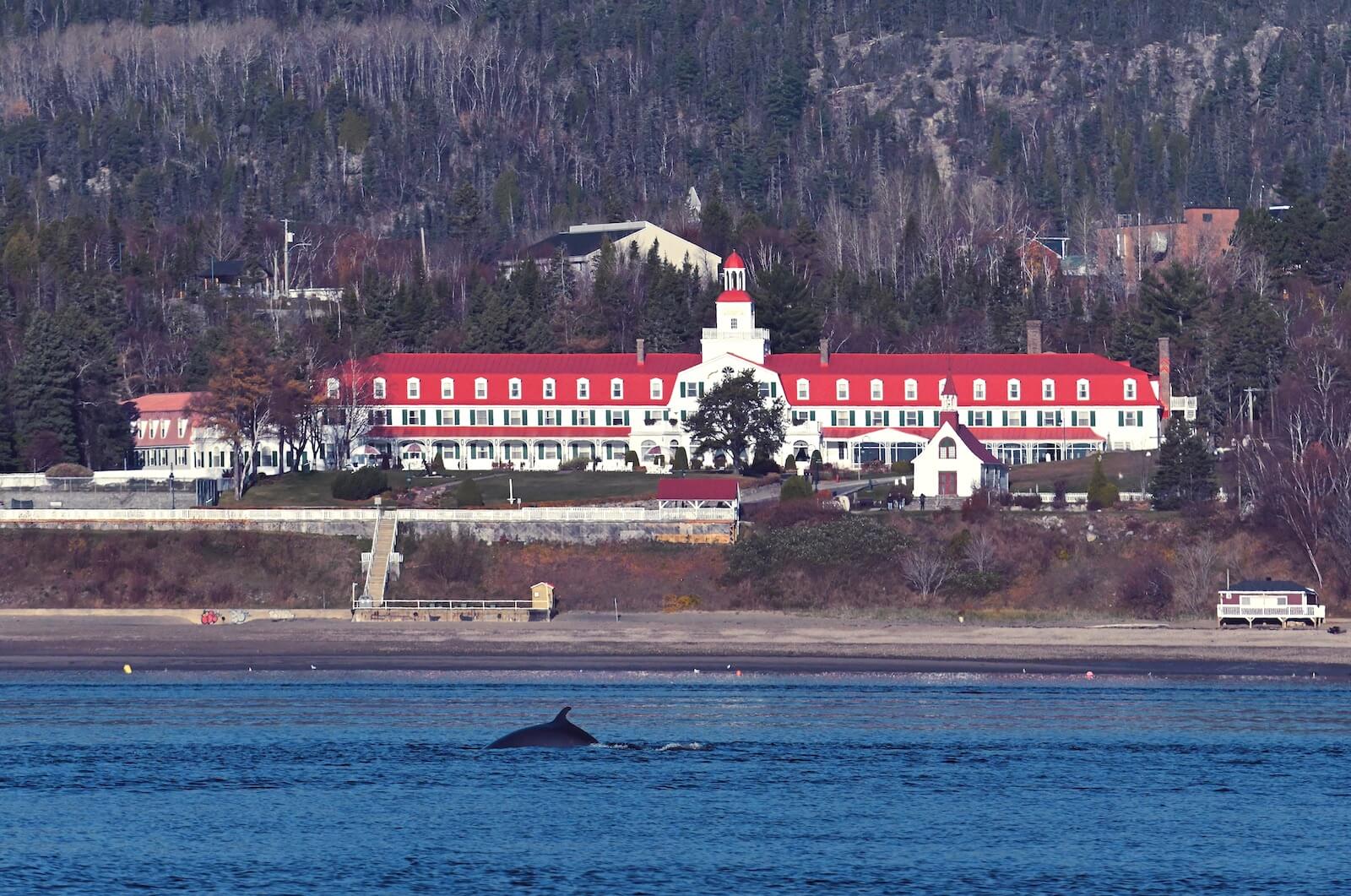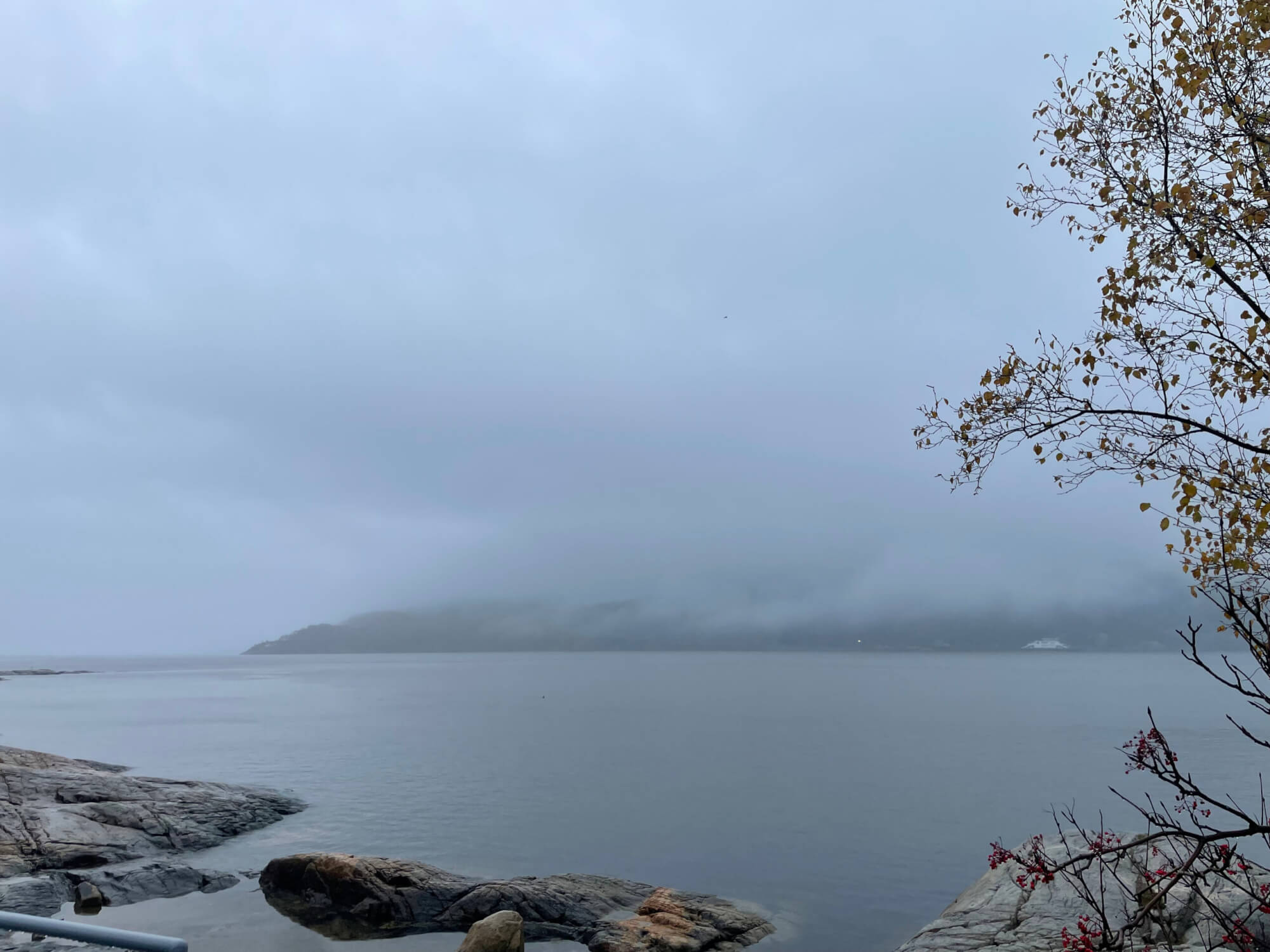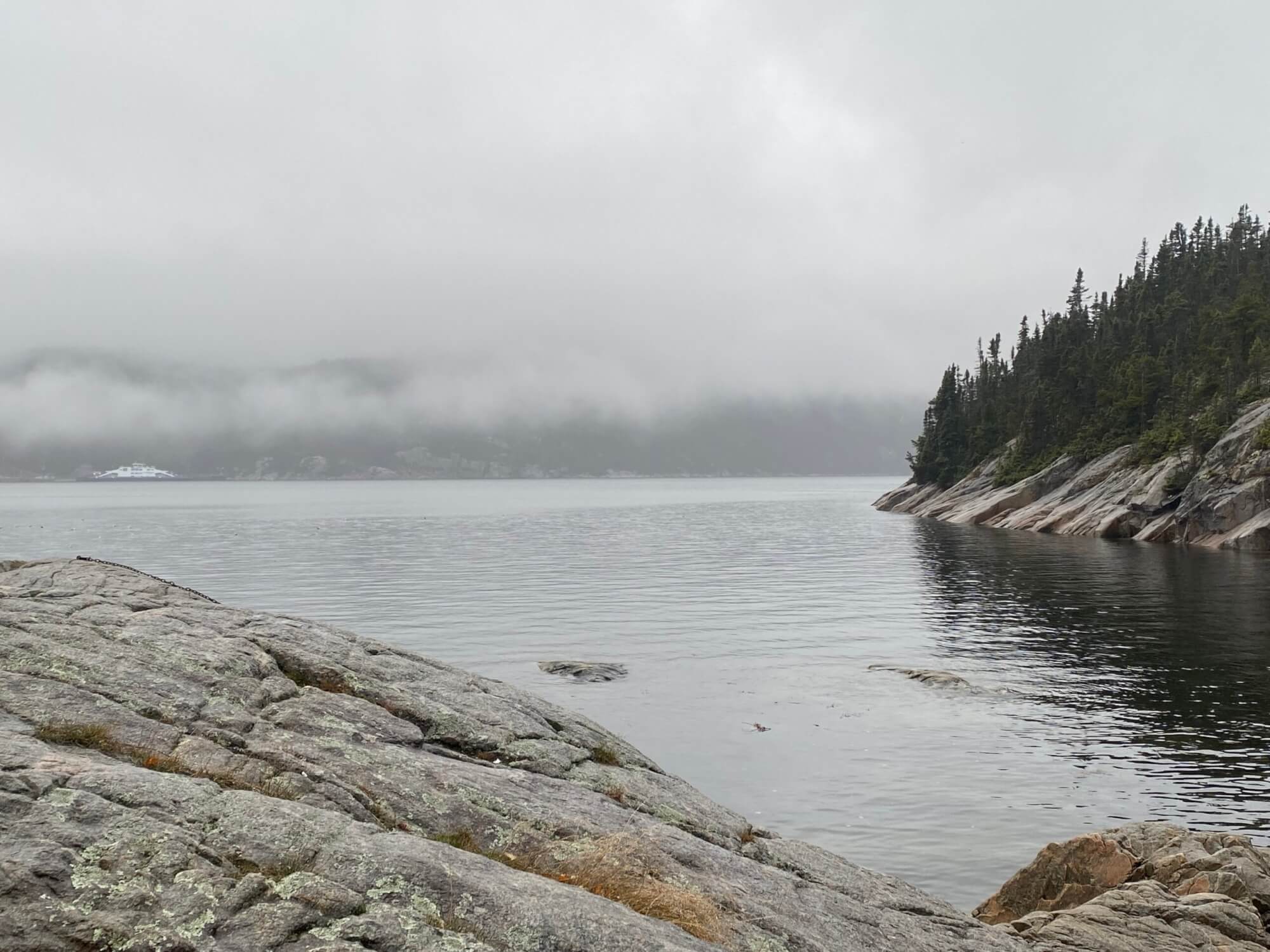The mystical appearance of the St. Lawrence was certainly a plus during the week leading up to Halloween! And the whales are all part of it, the white of the belugas reminiscent of ghostly apparitions in the Saguenay Fjord and a group of white-sided dolphins entering the estuary and causing a nice fall surprise.
Other marine creatures include humpback whales reported from Franquelin and Gaspé Bay, a few minke whales here and there amongst the harbour porpoises, not to mention numerous seals, some swimming on their backs like sea bats.
But never fear, all of them are pleasant to observe!
Large rorquals in Franquelin and Gaspé
Between the towns of Franquelin and Godbout, humpback whale spouts echo across the landscape as October draws to a close. One resident is surprised by the presence of so many cetaceans this time of year: “There were three lingering humpbacks. And i can’t believe how many minke whales are still here! […] They’ve been coming close to the coast, where the sand lance are abundant!”
In Gaspé Bay, operations on the water are slowly winding down at the same time as tourism in the region, but that doesn’t mean that the whales have left! Two humpbacks and a fin whale were still roaming the area.
A few groups of harbour porpoises and seals were seen at both locations.
Dolphins in the estuary
They swim in groups in successive leaps, a palette of colours radiating above the water surface. We can distinguish white and grey, topped by a yellow stripe and dark blue. They had been expected in the estuary for several weeks and now they have finally arrived! A group of about twenty Atlantic white-sided dolphins were splashing about between Tadoussac and Les Bergeronnes on October 28. Will the end of the season be like last year, when dozens of dolphins were still present through the end of November? These agile cetaceans feed mainly on small pelagic fish, squid and occasionally small benthic crustaceans. Fast swimmers, they can reach speeds of between 25 and 45 km/h. In the St. Lawrence, their presence in the estuary is generally exceptional and short-lived.
Belugas, minke whales and seals
White whales are definitely part of the Halloween theme. In Tadoussac, marine mammal enthusiasts are delighted with their presence: “I’ve been seeing some nice belugas in the fjord; they look a bit like white ghosts in the grey water!” “Lots of belugas yesterday (October 29) from the ferry, including a group of four that surfaced quite close, not to mention a feeding minke whale that passed by!” “This Halloween, it’s almost as if the fjord got dressed up for the occasion: It’s so shrouded in mist, you can barely make out the other bank! There were a few belugas swimming there earlier under the light fog before it lifted. Very Halloweenesque!”
Seals have been abundant just about everywhere. In the Marine Park, there are reports of large numbers of grey seals, a few harbour seals on the river banks, as well as dozens of harp seals. The Quebec Marine Mammal Emergency Response Network (QMMERN) also received its first report of a harp seal on the riverbanks, this time in Sainte-Luce. While walking near the coast, should you happen across a seal that is visibly injured, is in the way of human activities or if you witness people disturbing or handling it, promptly contact QMMERN at 1-877-722-5346.
End of the season
The arrival of November is also synonymous with the closure of many tourist establishments! The Marine Mammal Interpretation Centre (CIMM) will remain open until November 2. Last chance to meander amongst the majestic skeletons of the museum and fill your imagination with exciting stories about whales before the cold weather sets in. Not in the Tadoussac area? The virtual exhibition “Bones with Stories to Tell” relates the accounts of several skeletons on display at the CIMM.
Where are the whales this week? Observation map
These data were reported by our network of observers. They give an idea of the presence of whales and in no way represent the actual distribution of whales in the St. Lawrence. Just for fun!
Click on the whale or seal icons to discover the species, the number of individuals, additional information or photos of the sighting. To enlarge the map, click on the icon in the top right-hand corner. The map works well on Chrome and Firefox, but not so well on Safari.
To display the list of sightings, click on the icon in the top left-hand corner.
Thanks to all our collaborators!
Special thanks go out to all our observers who share their love for marine mammals with us! Your encounters with cetaceans and pinnipeds are always a pleasure to read and discover.
On the water or from shore, it is your eyes that give life to this column.
Odélie Brouillette
Thalia Cohen-Bacry
Laetitia Desbordes
Jade-Audrey Lavergne
Diane Ostiguy
Renaud Pintiaux
Pascal Pitre
Jean Roy
Andréanne Sylvain
Marielle Vanasse
And to all the others!
Additionally, we would like to acknowledge the following teams that also share their sightings:
Sept-Îles Research and Education Centre (CERSI)
Group for Research and Education on Marine Mammals (GREMM)
Marine Mammal Observation Network (MMON)
Quebec Marine Mammal Emergency Response Network (QMMERN)
Mingan Island Cetacean Study (MICS)
Would you also like to share your observations?
Have you seen any marine mammals in the St. Lawrence? Whether it’s a spout offshore or just a couple of seals, drop us a line and send your photos to [email protected]!


